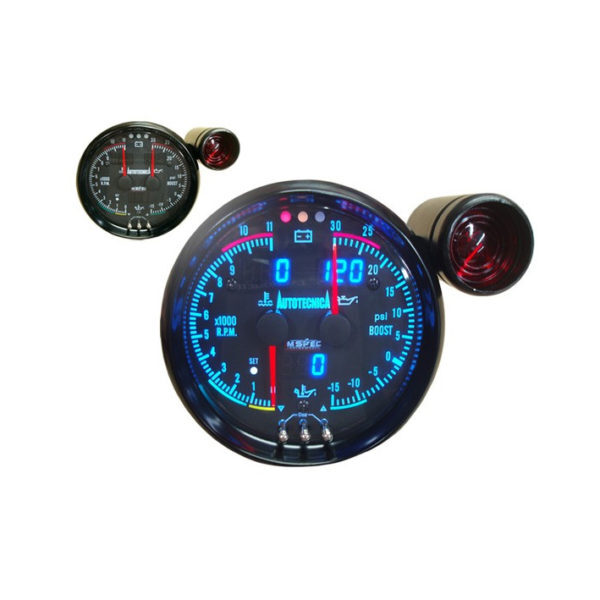Opening the Secrets of Tachometers: Everything You Need to Learn About This Vital Instrument in Your Car
Recognizing the ins and outs of tachometers can give valuable insights into your lorry's performance and maintenance demands. From determining engine rate to deciphering the information it provides, tachometers offer as a crucial device for automobile owners and lovers alike. By untangling the secrets behind this important tool, you can open a wide range of information that can improve your driving experience and ensure the longevity of your lorry.
Importance of Tachometers
The significance of tachometers depends on their capability to provide important real-time information about an engine's rotational speed, enabling for accurate surveillance and upkeep of machinery. By determining the revolutions per min (RPM) of an engine's crankshaft, tachometers supply useful understandings into the engine's performance - tachometer. This information is vital for ensuring that the engine runs within its optimal array, staying clear of prospective damages from over-revving or underperforming
Tachometers play a vital role in assisting drivers and technicians discover any anomalies in the engine's rate, which might suggest concerns such as gas ineffectiveness, mechanical problems, or excessive strain on the engine. By immediately identifying these problems with tachometer analyses, maintenance can be performed proactively, stopping costly fixings and downtime in the future.
Additionally, tachometers are especially vital in high-performance automobiles and equipment, where accurate control over engine speed is required for optimal procedure. Racing cars, airplane, and commercial devices depend on tachometers to supply peak efficiency while keeping safety requirements. Essentially, tachometers are not just tools for gauging rate but essential tools for making certain the smooth and reliable operation of engines throughout numerous applications.
How Tachometers Action Engine Speed
Utilizing sensing units that detect the regularity of electric pulses generated by the engine's ignition system, tachometers accurately determine the rotational rate of an engine. By checking the price at which these pulses are gotten, tachometers provide real-time comments on just how quick the engine's crankshaft is rotating per minute, typically described as transformations per minute (RPM)
The tachometer's sensing unit, commonly linked to the engine's ignition coil or ignition system cables, gets the electrical signals generated each time a cylinder fires. These signals are then exchanged RPM analyses showed on the gauge or tool collection within the driver's sight. Tachometers can be analog or electronic, with modern vehicles commonly including digital display screens for exact and instant RPM readings.
This information is essential for vehicle drivers to recognize the engine's efficiency, protect against over-revving, enhance gear moving, and guarantee effective fuel intake. By webpage accurately determining engine speed, tachometers play a crucial duty in assisting drivers run their cars securely and efficiently.
Analyzing Tachometer Readings
Having a clear understanding of how tachometers gauge engine rate sets the foundation for efficiently interpreting the RPM analyses displayed. Interpreting tachometer analyses is critical for optimal lorry efficiency and engine wellness. RPM (Changes Per Minute) readings on the tachometer suggest the speed at which the engine's crankshaft is turning. When the engine is idling, the tachometer needle usually rests around 600-1000 RPM, depending upon the lorry. As you increase, the RPM will increase, reflecting the engine's higher rotational rate. When changing gears in a hands-on transmission car, the RPM will go down as you involve the clutch and modification equipments, after that increase once again as you speed up in the new gear. Monitoring the tachometer can aid you establish the most effective shifting indicate make best use of fuel economic situation and engine power. In addition, unusual changes or constantly high RPM analyses might show potential problems with the engine that may need professional attention. By focusing on the tachometer readings and comprehending just how to interpret this link them, you can ensure your lorry operates smoothly and efficiently.


Tips for Making Use Of Tachometers Successfully
To enhance driving performance and enhance engine efficiency, what key techniques can be implemented for properly using tachometers? Tachometers are important devices that offer real-time comments on engine speed, allowing motorists to make educated decisions for far better efficiency - tachometer. Right here are some pointers for making use of tachometers successfully:
Understanding Optimal RPM Range: Familiarize on your own with the optimum RPM (Changes Per Min) variety for your automobile. Maintaining the engine within this array can enhance fuel efficiency and lengthen the engine's lifespan.
Changing Equipments at the Right Time: Use the tachometer to determine the best time to move equipments. Goal to shift gears when the RPM gets to the optimum variety for the following gear.
Checking Engine Stress: High RPMs for long term durations can stress the engine. Keep an eye on the tachometer to stop over-revving, specifically throughout velocity or when carrying heavy loads.
Tachometers and Vehicle Maintenance
When considering automobile maintenance, tachometers play a crucial role in keeping an eye on engine performance and identifying prospective issues. Tachometers offer vital data on engine rate, enabling chauffeurs and mechanics to guarantee that the engine is running within the suggested RPM variety.
Along with identifying potential issues, tachometers can additionally aid in enhancing gas efficiency. By keeping the engine rate within the optimum variety, motorists can improve their gas mileage and lower gas consumption. This not only profits the chauffeur's wallet yet also contributes to environmental preservation by reducing you can try these out harmful exhausts.
Verdict
